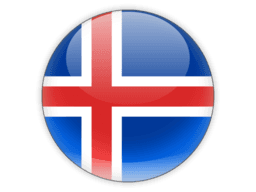
Regions of Iceland
Explore 8 regions
Cities of Iceland
Discover 14 cities across 8 regions
Capital Region(5)
Northeast(1)
Northwest(1)
South(1)
Southern Peninsula(2)
Westfjords(1)
Iceland is a Nordic island country located in the North Atlantic Ocean, and is known for its breathtaking landscapes, glaciers, hot springs, geysers, volcanoes, and aurora borealis. The country is sparsely populated with a population of around 360,000 people.
Reykjavik is the capital and largest city of Iceland. It is home to a large part of the population and is the economic and cultural center of the country. The city is renowned for its vibrant nightlife, museums, galleries, and restaurants.
The official language of Iceland is Icelandic, and the currency is the Icelandic krona (ISK). English is widely spoken, and many tourists find communication easy.
Iceland is a popular destination for outdoor activities such as hiking, camping, fishing, and horseback riding. Visitors can also enjoy glacier hiking, ice caving, snowmobiling, and whale watching. The country is also famous for its geothermal pools and spas, such as the Blue Lagoon.
The best time to visit Iceland is from May to September when the weather is milder and daylight lasts longer. However, this is also the busiest time of the year, so it's advisable to book accommodation and activities in advance.
Iceland is a safe and welcoming country with a high standard of living. However, visitors should be aware of the extreme weather conditions and follow safety guidelines while exploring the outdoors.
Telephone Code
354
Local Emergency Phone
112
Vaccinations
See WHO recommendations
Climate
Temperate; moderated by North Atlantic Current; mild, windy winters; damp, cool summers
Currency (Code)
Icelandic kronur (ISK)
Electricity/Voltage/Plug Type(s)
230 V / 50 Hz / plug types(s): C, F
Major Languages
Icelandic, English, Nordic languages, German
Major Religions
Evangelical Lutheran Church of Iceland (official) 62.3%, Roman Catholic 4%, Reykjavik Free Church 2.7%, Hafnarfjordur Free Church 2%, pagan worship 1.4%, Icelandic Ethical Humanist 1.1%
Potable Water
Yes
International Driving Permit
Suggested
Road Driving Side
Right
Tourist Destinations
Blue Lagoon in Grindavík; Geysers in Strokkur; Thingvellir National Park; Reykjavik; whale watching from Reykjavik; Gullfoss Waterfall; Northern Lights; Landmannalaugar Nature Reserve; Maelifell Volcano; Myrdalsjökull Glacier
Major Sports
Handball, soccer, track and field, golf, basketball, tennis
Cultural Practices
Littering is uncommon in Iceland, and visitors are expected to do their part to maintain the pristine natural environment.
Tipping Guidelines
Tipping is not expected at hotels and restaurants since most bills include a service charge for gratuities. Round up taxi fares.
Souvenirs
Hand-knit wool items including blankets, sweaters, hats, coats, and mittens; pottery, local spirits, Viking themed items and dolls in traditional costumes; carved fish skin, lava rock, and driftwood items; felt stuffed animal toys
Traditional Cuisine
Lamb; Hákarl — cured (fermented) shark meat
Geography
Area
total: 103,000 sq km
land: 100,250 sq km
water: 2,750 sq km
Climate
temperate; moderated by North Atlantic Current; mild, windy winters; damp, cool summers
Natural resources
fish, hydropower, geothermal power, diatomite
People and Society
Population
360,872 (2023 est.)
Ethnic groups
Icelandic 81.3%, Polish 5.6%, Danish 1%, other 12.1% (2021 est.)
Languages
Icelandic, English, Nordic languages, German
Religions
Evangelical Lutheran Church of Iceland (official) 62.3%, Roman Catholic 4%, Independent Congregation of Reykjavik 2.7%, Independent Congregation of Hafnarfjordur 2%, pagan worship 1.4%, Icelandic Ethical Humanist Association 1.1%, other (includes Zuist and Pentecostal) or unspecified 19%, none 7.6% (2021 est.)
Population growth rate
0.89% (2023 est.)
Government
Government type
unitary parliamentary republic
Capital
name: Reykjavik
Economy
Economic overview
high-income European economy; frozen EU accession application but Schengen Area member; tourism industry, which helped rebound the economy after 2008 collapse, hit hard by COVID-19; major fishing industry; complex regulatory environment
Real GDP (purchasing power parity)
$19.962 billion (2021 est.)
Real GDP per capita
$53,600 (2021 est.)
Agricultural products
milk, mutton, poultry, potatoes, barley, pork, eggs, beef, other meat, sheep skins
Industries
tourism, fish processing; aluminum smelting; geothermal power, hydropower; medical/pharmaceutical products
Exports
$9.775 billion (2021 est.)
Exports - partners
Netherlands 23%, United Kingdom 9%, Germany 9%, Spain 8%, United States 7%, France 7%, Canada 5% (2019)
Exports - commodities
aluminum and aluminum products, fish products, aircraft, iron alloys, animal meal (2019)
Imports
$10.234 billion (2021 est.)
Imports - partners
Norway 11%, Netherlands 10%, Germany 8%, Denmark 8%, United States 7%, United Kingdom 6%, China 6%, Sweden 5% (2019)
Imports - commodities
refined petroleum, aluminum oxide, carbon/graphite electronics, cars, packaged medicines (2019)
International Airports in Iceland
Discover 7 major airports serving Iceland
Mark Iceland as Visited
Add Iceland to your personal travel map and track your journey around the world. Share your adventures and see your progress grow!